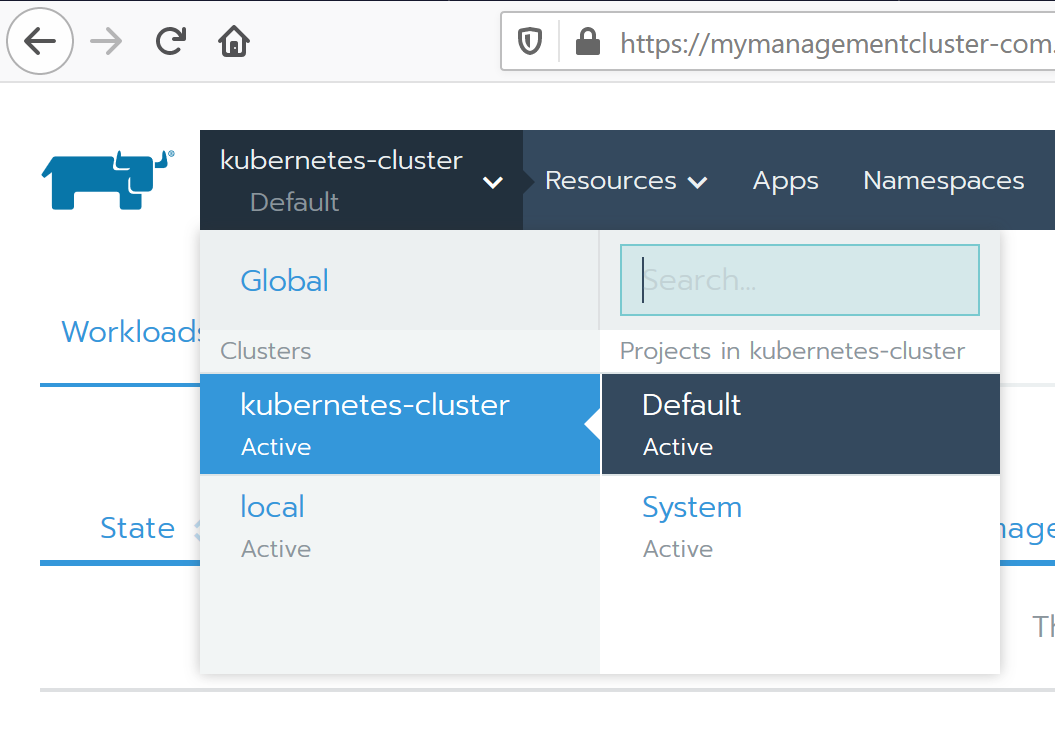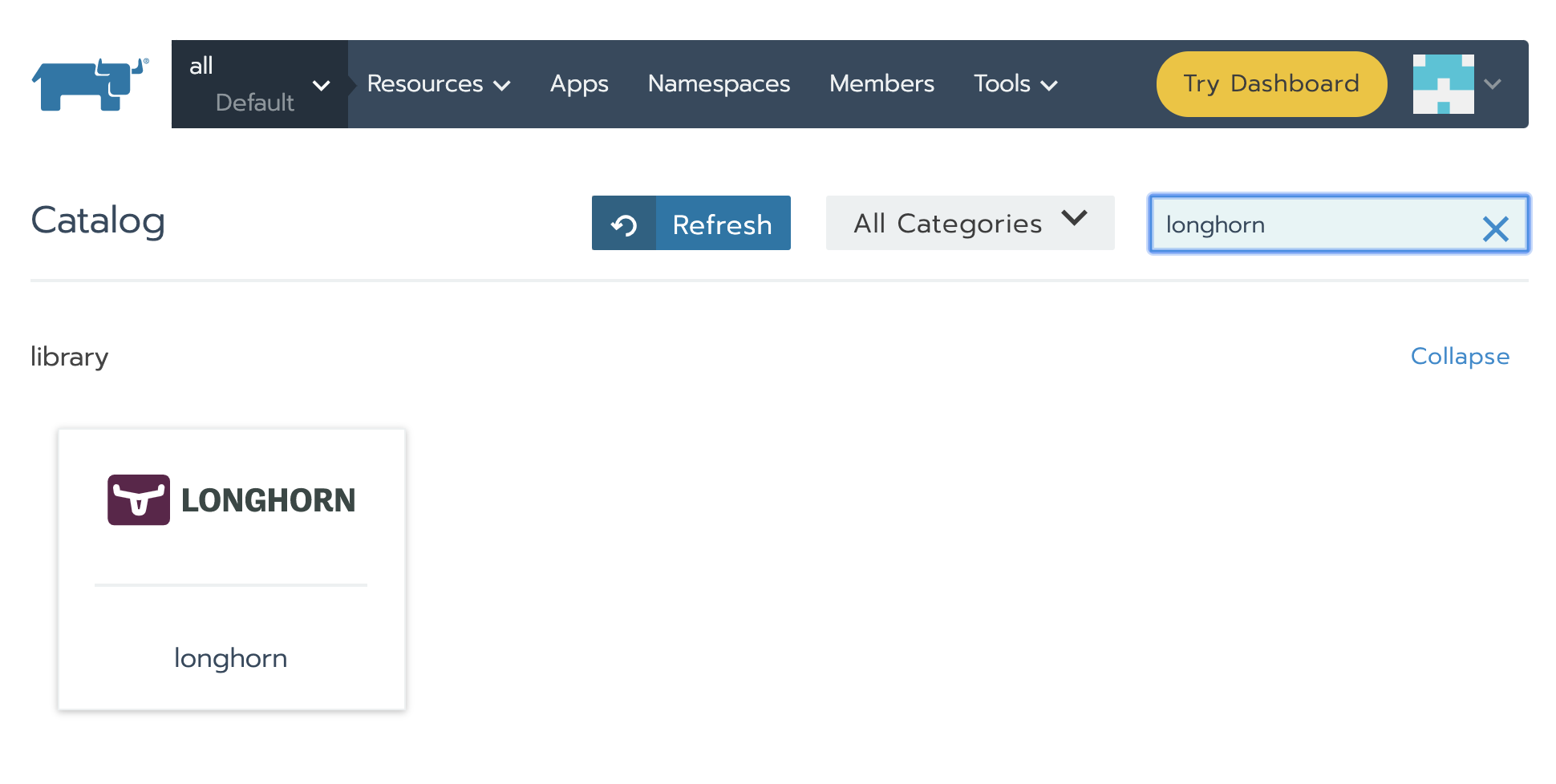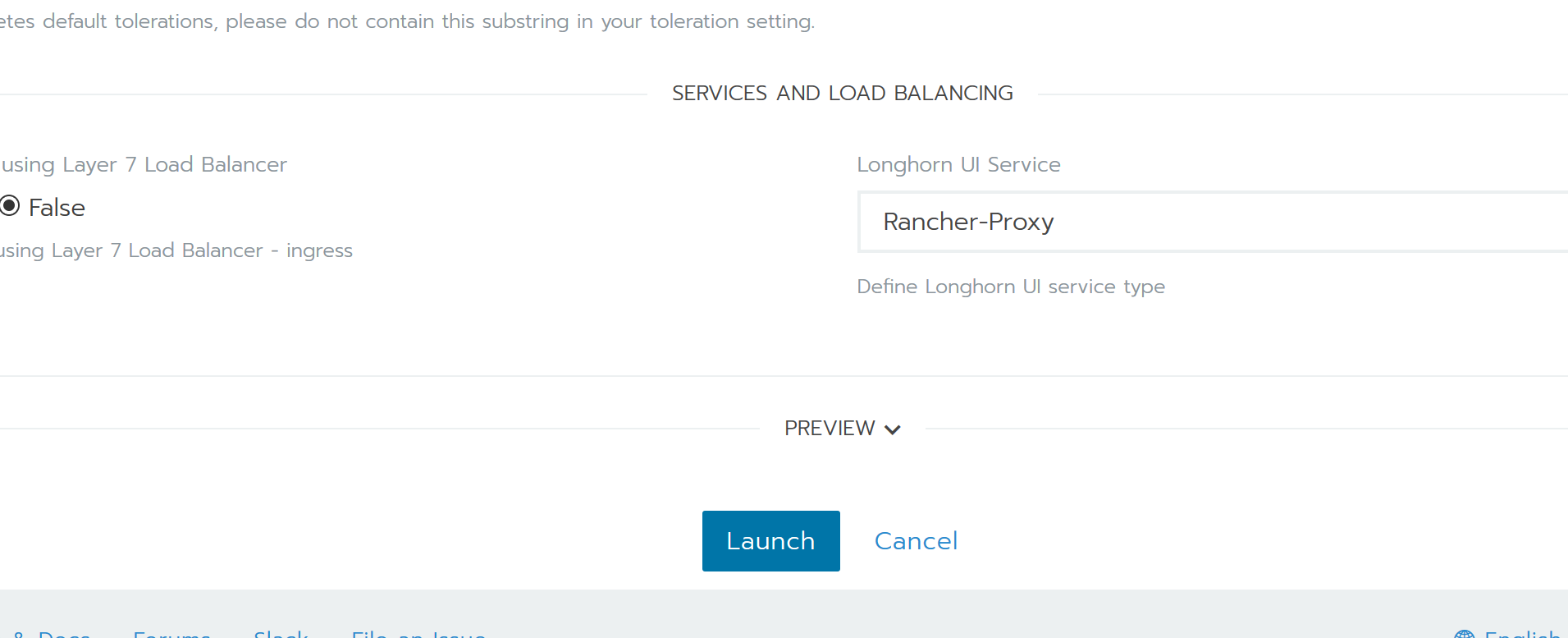Install Longhorn with the Rancher UI
Run Longhorn on Kubernetes with Rancher 2.x
One benefit of installing Longhorn through Rancher catalog is Rancher provides authentication to Longhorn UI.
If there is a new version of Longhorn available, you will see an Upgrade Available sign on the Catalog Apps page. You can click Upgrade button to upgrade Longhorn manager. See more about upgrade here.
Prerequisites
- Rancher v2.1+
- A container runtime compatible with Kubernetes (Docker v1.13+, containerd v1.3.7+, etc.)
- Kubernetes v1.14+ cluster with 1 or more nodes and Mount Propagation feature enabled. If your Kubernetes cluster was provisioned by Rancher v2.0.7+ or later, MountPropagation feature is enabled by default. Check your Kubernetes environment now. If MountPropagation is disabled, the Base Image feature will be disabled.
- Make sure
curl,findmnt,grep,awkandblkidhas been installed in all nodes of the Kubernetes cluster. open-iscsihas been installed on all the nodes of the Kubernetes cluster, andiscsiddaemon is running on all the nodes.- For GKE, recommended Ubuntu as guest OS image since it contains open-iscsi already.
- For SUSE/openSUSE, use
zypper install open-iscsito install. - For Debian/Ubuntu, use
apt-get install open-iscsito install. - For RHEL/CentOS, use
yum install iscsi-initiator-utilsto install. - For EKS with
EKS Kubernetes Worker AMI with AmazonLinux2 image, useyum install iscsi-initiator-utilsto install. You may need to edit cluster security group to allow ssh access.
- A host filesystem supports
file extentsfeature on the nodes to store the data. Currently we support:- ext4
- XFS
Installation
- Navigate to the Cluster and Project where you will install Longhorn. We recommended to create a new project e.g.
Storagefor Longhorn.
- Navigate to the
Catalog Appspage.
- Find the Longhorn item in the catalog and click it.

- You can leave the defaults for now.
- Click Launch. Longhorn will be installed in the
longhorn-systemnamespace.
- Longhorn is now installed.

- Click the index.html link to navigate to the Longhorn dashboard.

After Longhorn has been successfully installed, you can access the Longhorn UI by navigating to the Catalog Apps page.
© 2019-2025 Longhorn Authors | Documentation Distributed under CC-BY-4.0
© 2025 The Linux Foundation. All rights reserved. The Linux Foundation has registered trademarks and uses trademarks. For a list of trademarks of The Linux Foundation, please see our Trademark Usage page.